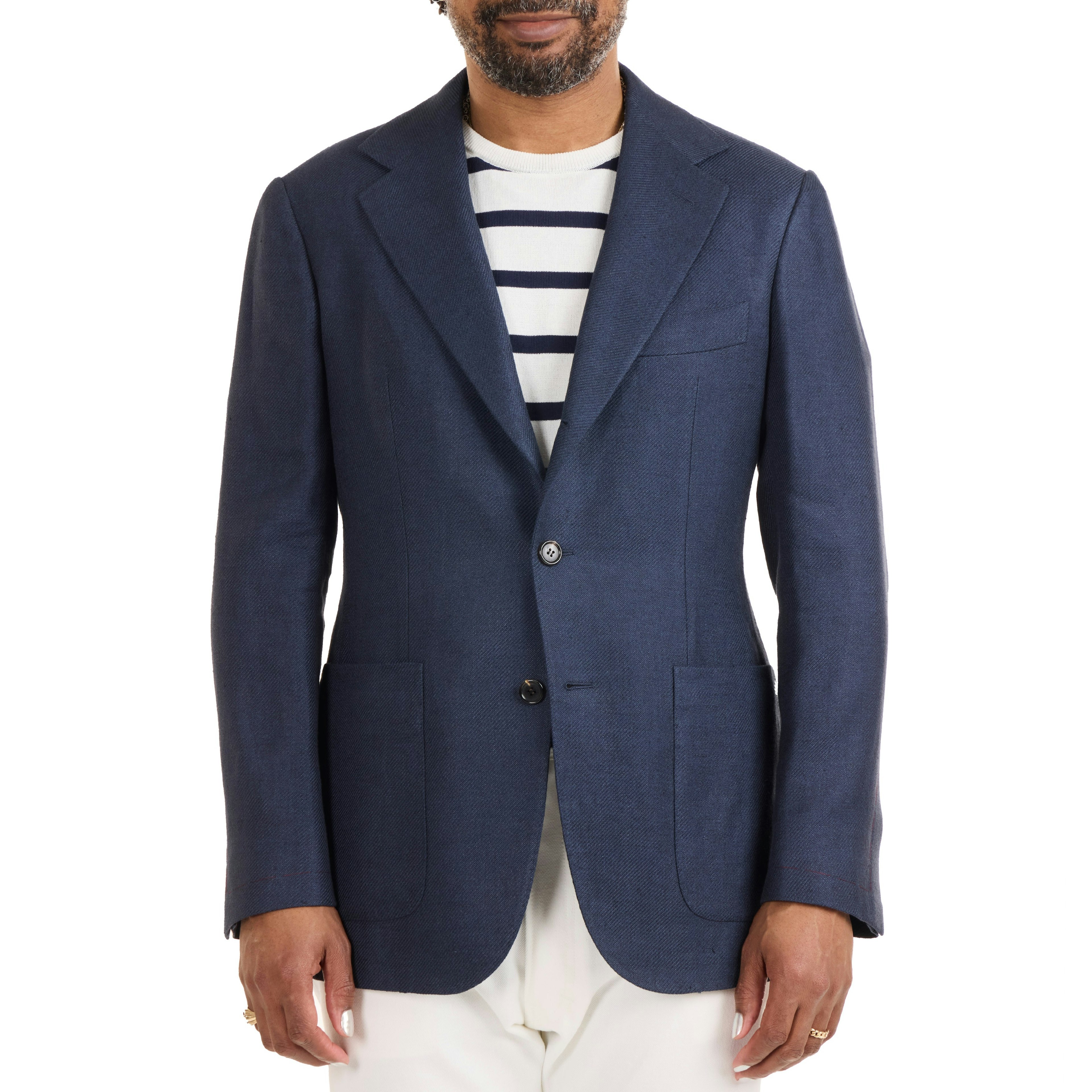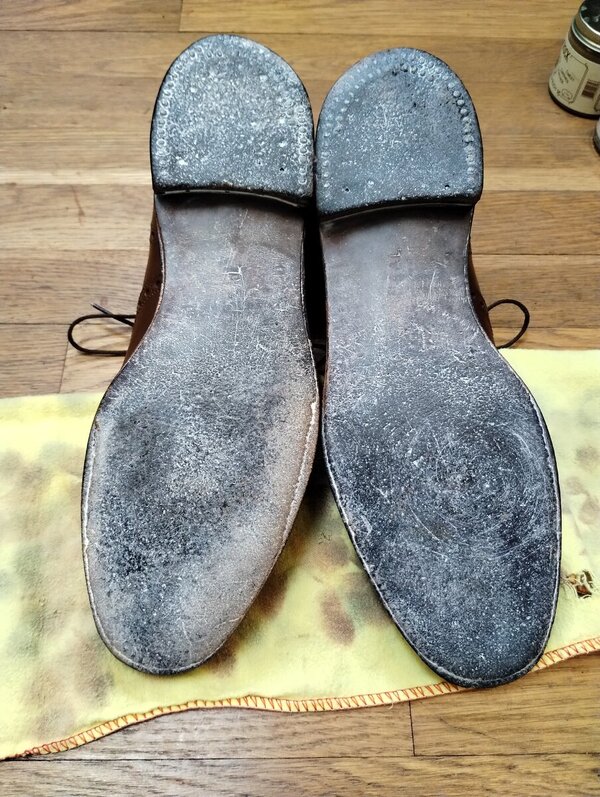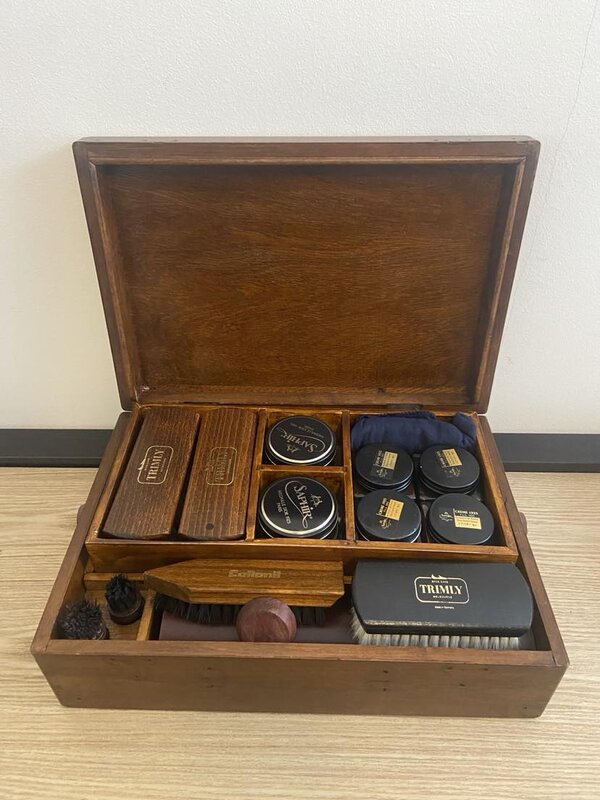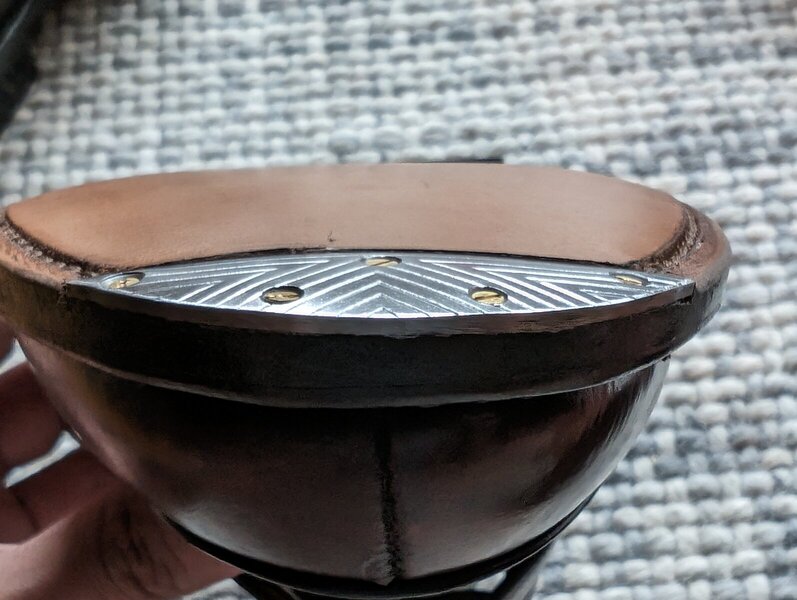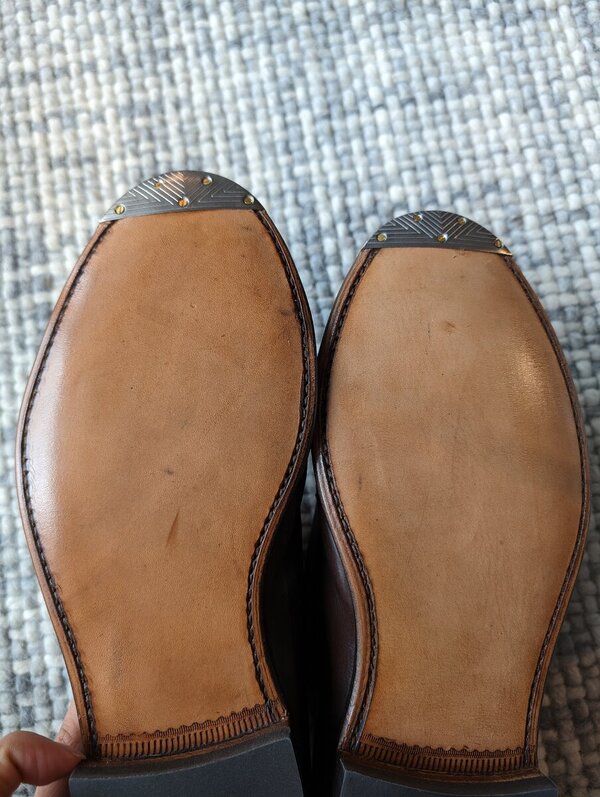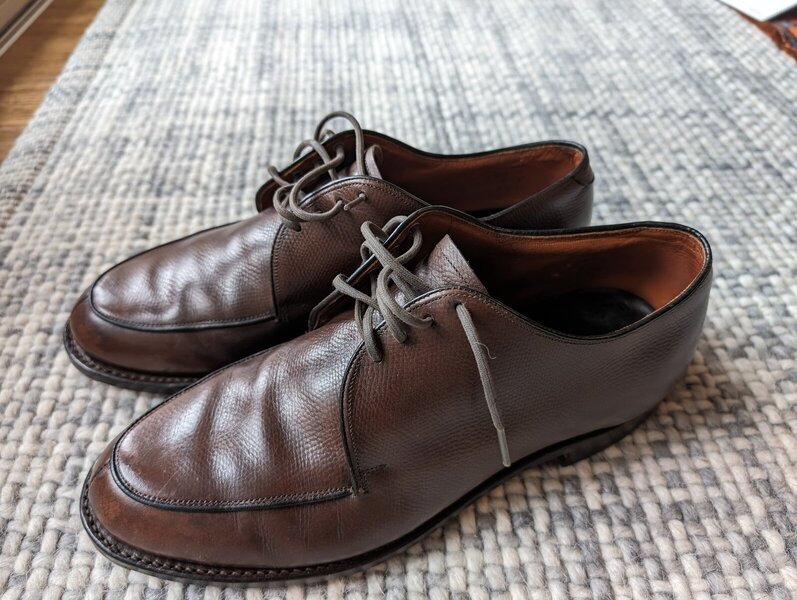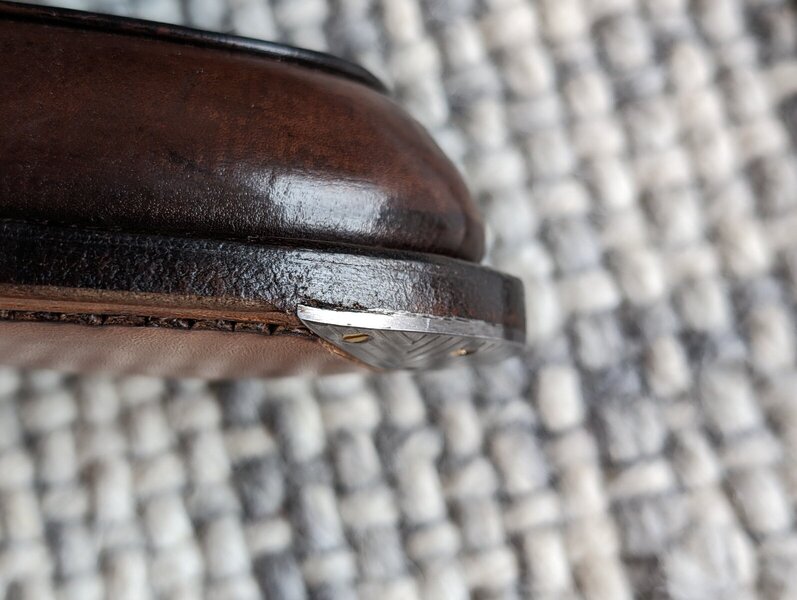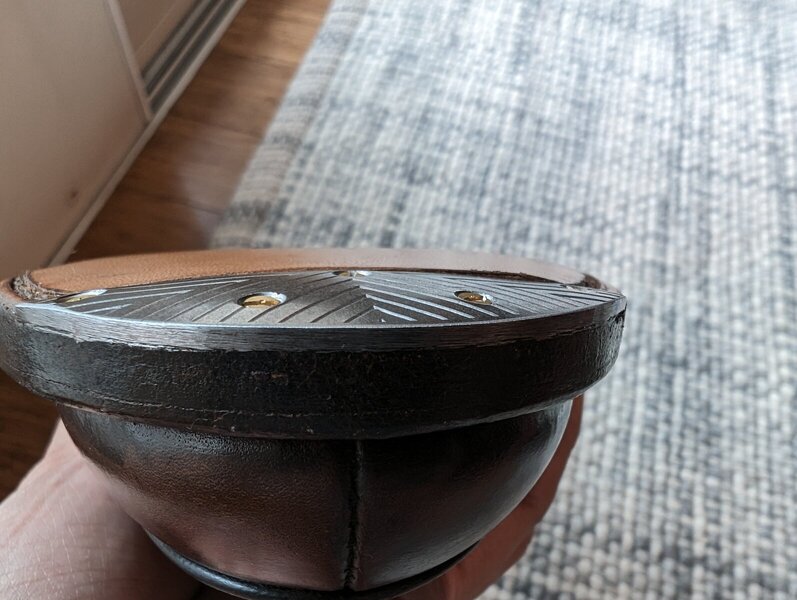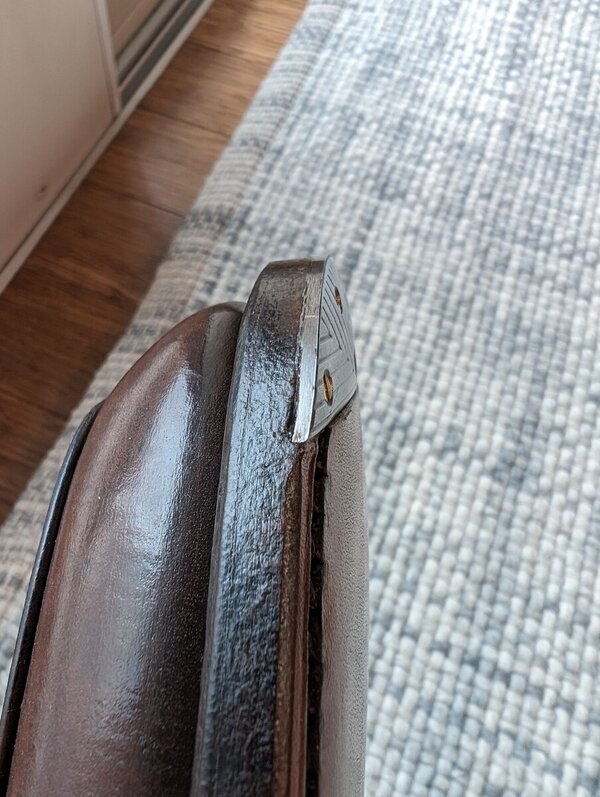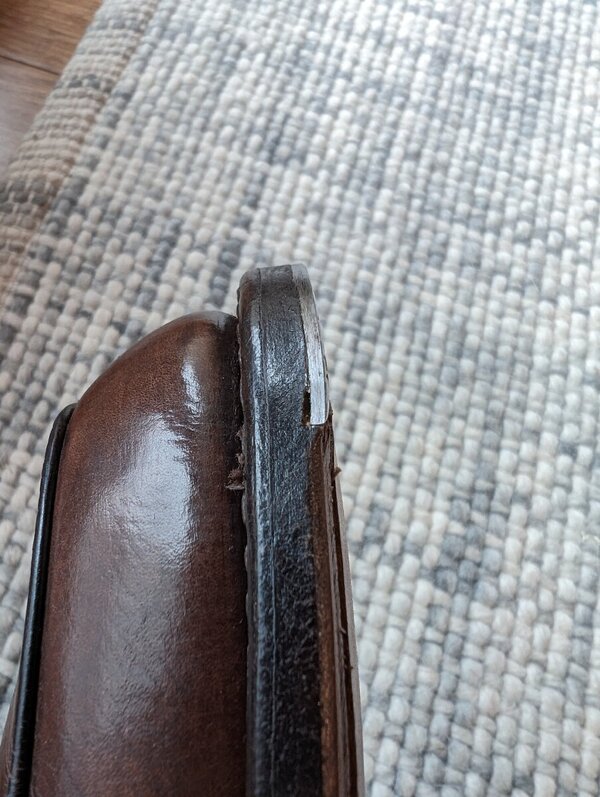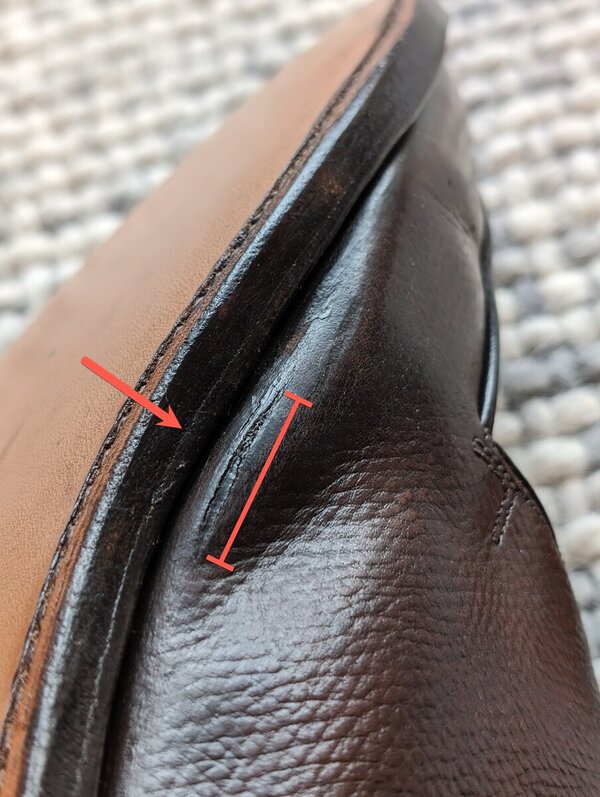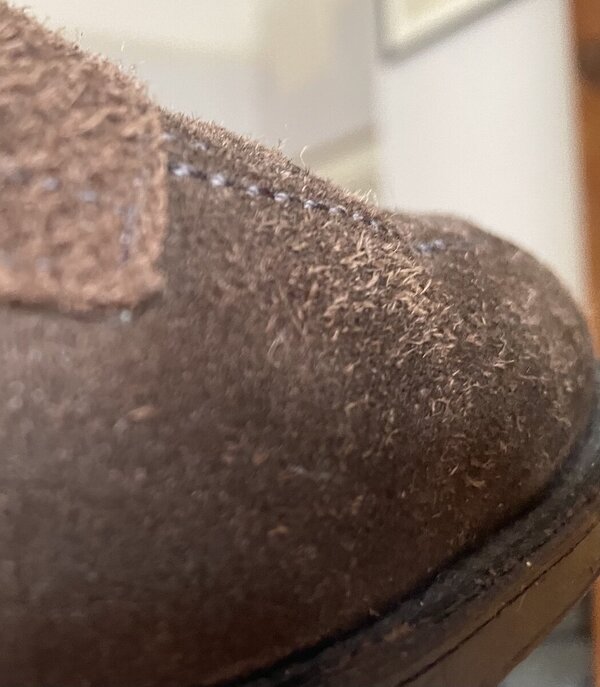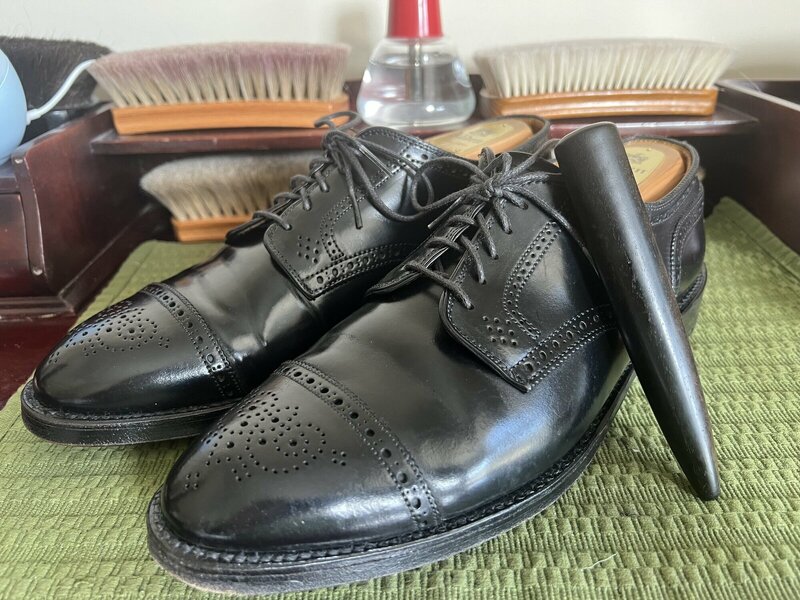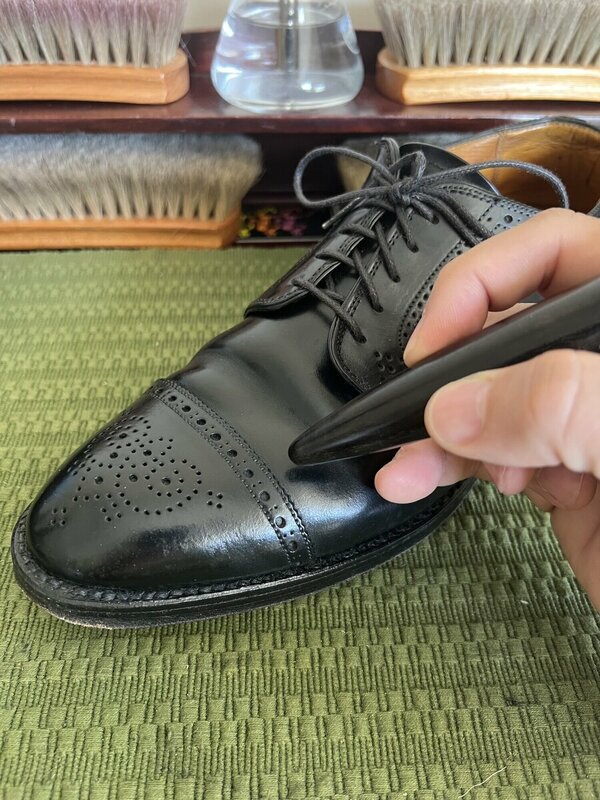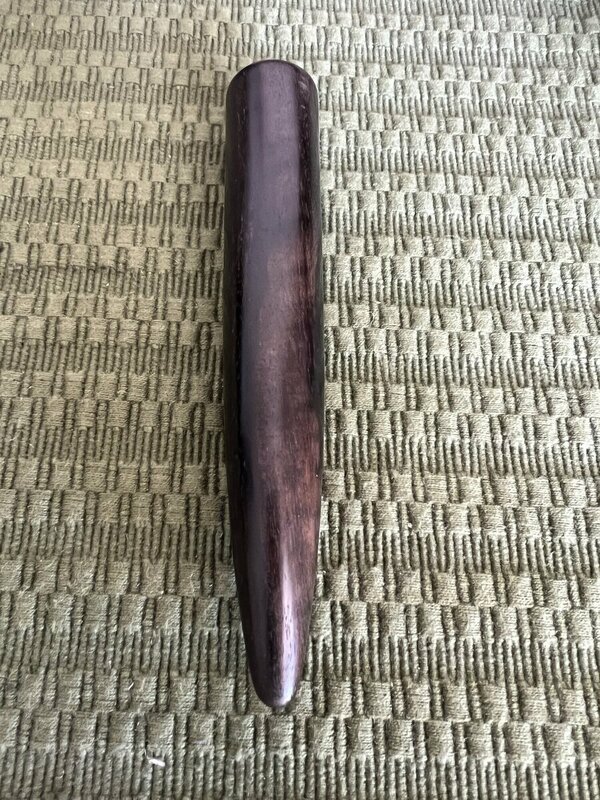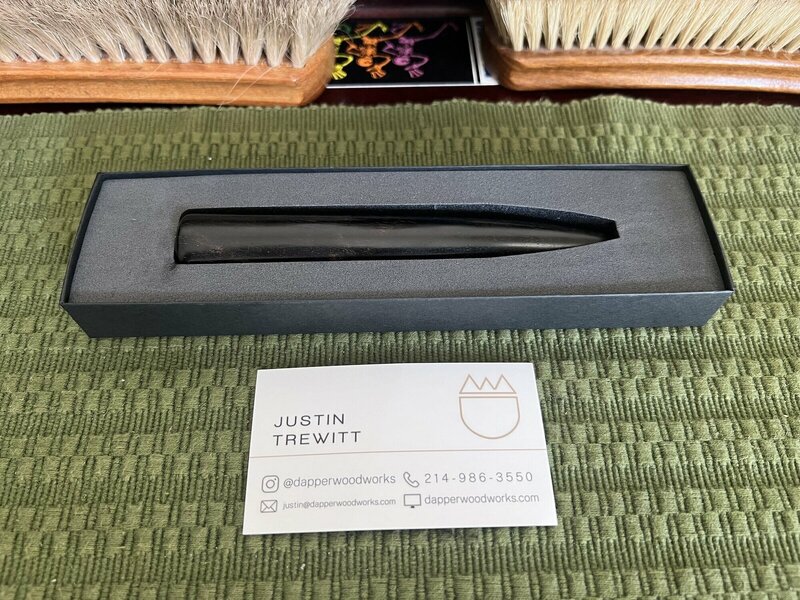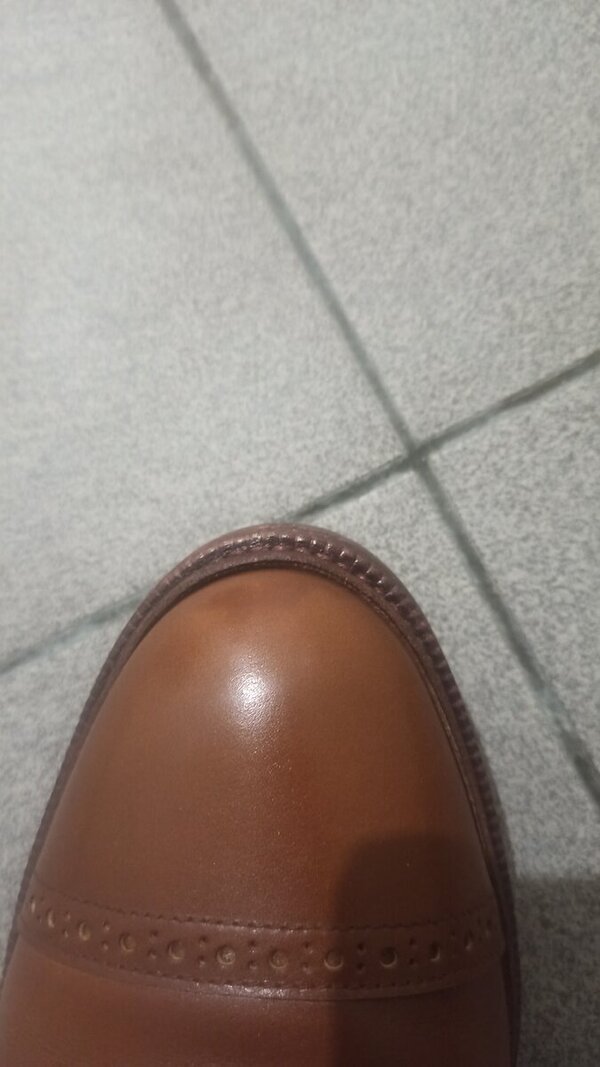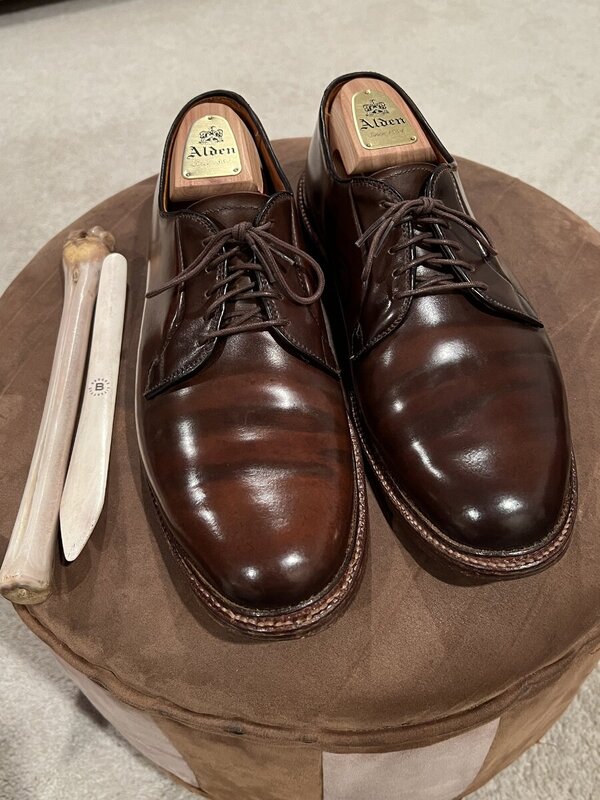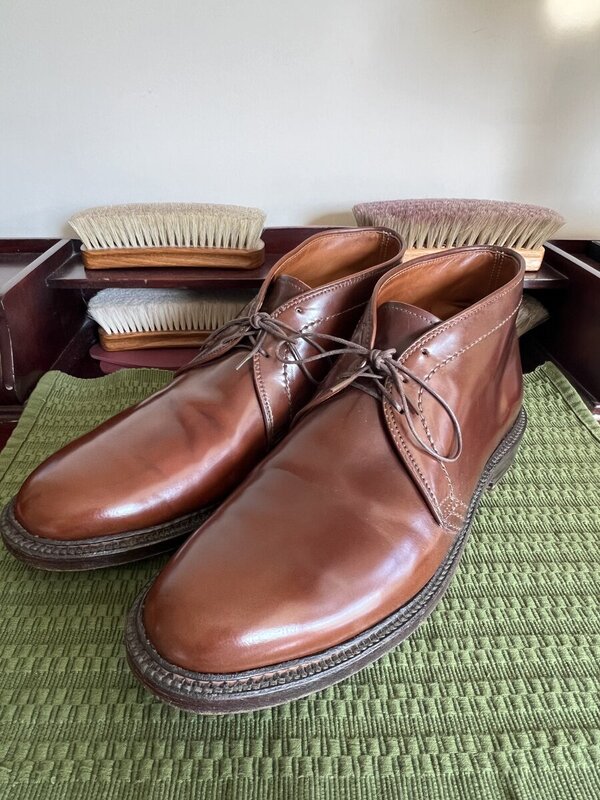- Joined
- Oct 16, 2006
- Messages
- 38,393
- Reaction score
- 13,643
With goodyear welted shoes the uppers are not stitched to the welt, they are generally stapled to the insole and gemming is glued to the insole and the welt is sewn into the gemming. It doesn't look like the gemming came loose on these, but rather the leather upper tore. Not sure what can be done. Perhaps send the pics to B Nelson to see what Nick says.
I am wondering how this is possible since I thought this couldn't happen to a Goodyear welted shoe? I was under the impression that the uppers were stitched to the insole/welt instead of glued.
The shoes are made by Barker, model name is Grant.



With goodyear welted shoes the uppers are not stitched to the welt, they are generally stapled to the insole and gemming is glued to the insole and the welt is sewn into the gemming. It doesn't look like the gemming came loose on these, but rather the leather upper tore. Not sure what can be done. Perhaps send the pics to B Nelson to see what Nick says.
![shog[1].gif](http://files.styleforum.net/images/smilies/shog[1].gif)


